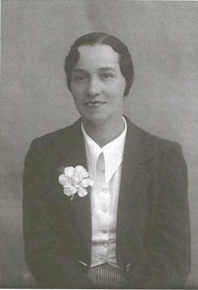Maurizio Costanzo - talk show host
Journalist whose show is the longest running on Italian TV
Veteran talk show host and writer Maurizio Costanzo was born on this day in 1938 in Rome. Costanzo has spent more than 40 years in television. His eponymous programme, the Maurizio Costanzo Show, has broken all records for longevity in Italian television. Launched on September 18, 1982, the current affairs programme continued for 27 years, alternating between Rete 4 and Canale 5, two of Italy's commercial television networks, part of the Mediaset group owned by former Italian prime minister Silvio Berlusconi. Its run came to an end in 2009 but was relaunched on the satellite channel Mediaset Extra in 2014 and returned to terrestrial television in 2015, again on Rete 4. Costanzo began his media career in print journalism with the Rome newspaper Paese Sera at just 18 years old and by the time he was 22 he was in charge of the Rome office of the mass circulation magazine Grazia. After branching into radio, he switched to television in 1976, hosting the RAI programme Bontà loro, which is considered to be Italy's first TV talk show. Others followed before the launch of the Maurizio Costanzo Show, which involved prominent politicians and others in the public eye, discussing major issues of the day. Read more...
______________________________________
Lamberto Maggiorani - unlikely movie star
Factory worker who shot to fame in Bicycle Thieves
Lamberto Maggiorani, who found overnight fame after starring in the neorealist classic Bicycle Thieves (1948), was born on this day in 1909 in Rome. Maggiorani was cast in the role of Antonio Ricci, a father desperate for work to support his family in post-War Rome, who is offered a job pasting posters to advertising hoardings but can take it only on condition that he has a bicycle – essential for moving around the city carrying his ladder and bucket. He has one, but it has been pawned. To retrieve it, his wife, Marie, strips the bed of her dowry sheets, which the pawn shop takes in exchange for the bicycle. They are happy, because Antonio has a job which will support her, their son Bruno and their new baby. However, on his first day in the job the bicycle is stolen, snatched by a thief who waits for Antonio to climb to the top of his ladder before seizing his moment. The remainder of the film follows Antonio and Bruno as they try to find the bicycle. As a portrait of life among the disadvantaged working class in Rome in the late 1940s, the film is hailed as a masterpiece, director Vittorio de Sica and his screenwriter Cesare Zavattini fêted by the critics for turning a little-known novel by Luigi Bartolini into a piece of cinema genius. Read more…
______________________________________
Elisabetta Sirani – artist
Sudden death of talented young woman shocked Bologna
The brilliant Baroque painter and printmaker Elisabetta Sirani died in unexplained circumstances at the age of 27 on this day in 1665 in Bologna. The body of the artist was carried to the Chapel of the Rosary in the Basilica of San Domenico in Bologna to be mourned, not just by her family, but by an entire community as she was loved and respected as an important female painter. Elisabetta has been described as beautiful, focused and selfless and she became a symbol of the progressive city of Bologna, where the creativity of women was encouraged and they were able to express themselves through art and music. Elisabetta’s father, Giovanni Andrea Sirani, was himself an artist and she was trained in his studio, although contemporary writers have recorded that he was reluctant to teach her to paint in the Bolognese style, as established by artists in the city in the 16th and 17th centuries as a way to distinguish themselves from the artists of Florence and Rome. But Elisabetta acquired the technique anyway and became one of the most renowned painters in Bologna, overshadowing her father. Read more…
.jpg)
%20(1).jpg)

.jpg)
_nave_left_-_Altar_of_Madona_di_Ca'Pesaro%20(2).jpg)

.jpg)


.jpg)

_-_Facade.jpg)


.jpg)
.jpg)